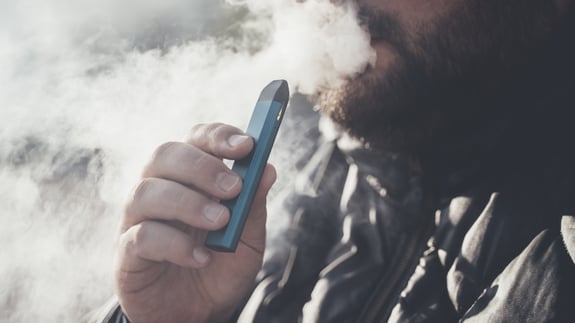
Thinking About Quitting?
Thinking about leaving your nicotine addiction in the past? Put out that cigarette, drop the vape pen and close the tin for the last time.
CONGRATS!
The first and most important step in kicking your tobacco habit for good is just thinking about quitting. Moving forward to learn about the countless benefits of quitting may be the best decision you make.
Now it's time to take the next step: Learn more about the benefits of quitting!
Why Quit?
Quitting can forever change your life for the better. Imagine being able to breathe more easily, save thousands every year, play a more active role in relationships and more.
The health benefits of quitting are immediate and include reduced risk of cancers, heart disease, and stroke. A 35 year-old man who quits smoking will, on average, increase his life expectancy by 5 years!
- After 20 minutes your pulse and blood pressure return to normal.
- After 12 hours your oxygen level returns to normal, and carbon monoxide and nicotine levels in the blood are reduced to half.
- Within 24 hours your lungs start to clear out smoking debris and mucus, and carbon monoxide will be eliminated from your body.
- After 48 hours your ability to smell and taste is improved.
- Within 2 weeks the circulation of your whole body improves.
- Within 3-9 months the function of your lungs are increased up to 10%, and there is less coughing and wheezing.
- Within 5 years your risk of heart attack falls to about half.
Choose from 3 FREE ways to quit and stay quit.
Learn MoreQuitting means making your life better in many aspects, from your health to your wallet to your relationships.
Learn MoreKnow someone who uses tobacco? Here's how you can help.
Read MoreJust one pack of cigarettes on average costs about $7 in the United States. See what you're spending.
Read MoreIf your child is using tobacco products, here's how you can help.
Read MoreQuit & Stay Quit
Everybody quits differently. Your quit journey is your own, and only you know what works for you. Find the method that fits into your journey to put out that cigarette, shut off the vape pen or close the tin for the last time. Start your quit journey today, and get back to your life!
Read MorePhone Coaching
Get help from a Quitline phone coach. Your coach will be there for you every step of the way.
Get StartedKickstart Kit
Kick the habit with the FREE Kickstart Kit, which ships to your door with cessation medication and the Quit Guide.
Get Your KitQuit Guide
Skip the coaching and medication for now. Start your journey with the FREE Quit Guide to quit when you are ready.
Get the Guide





